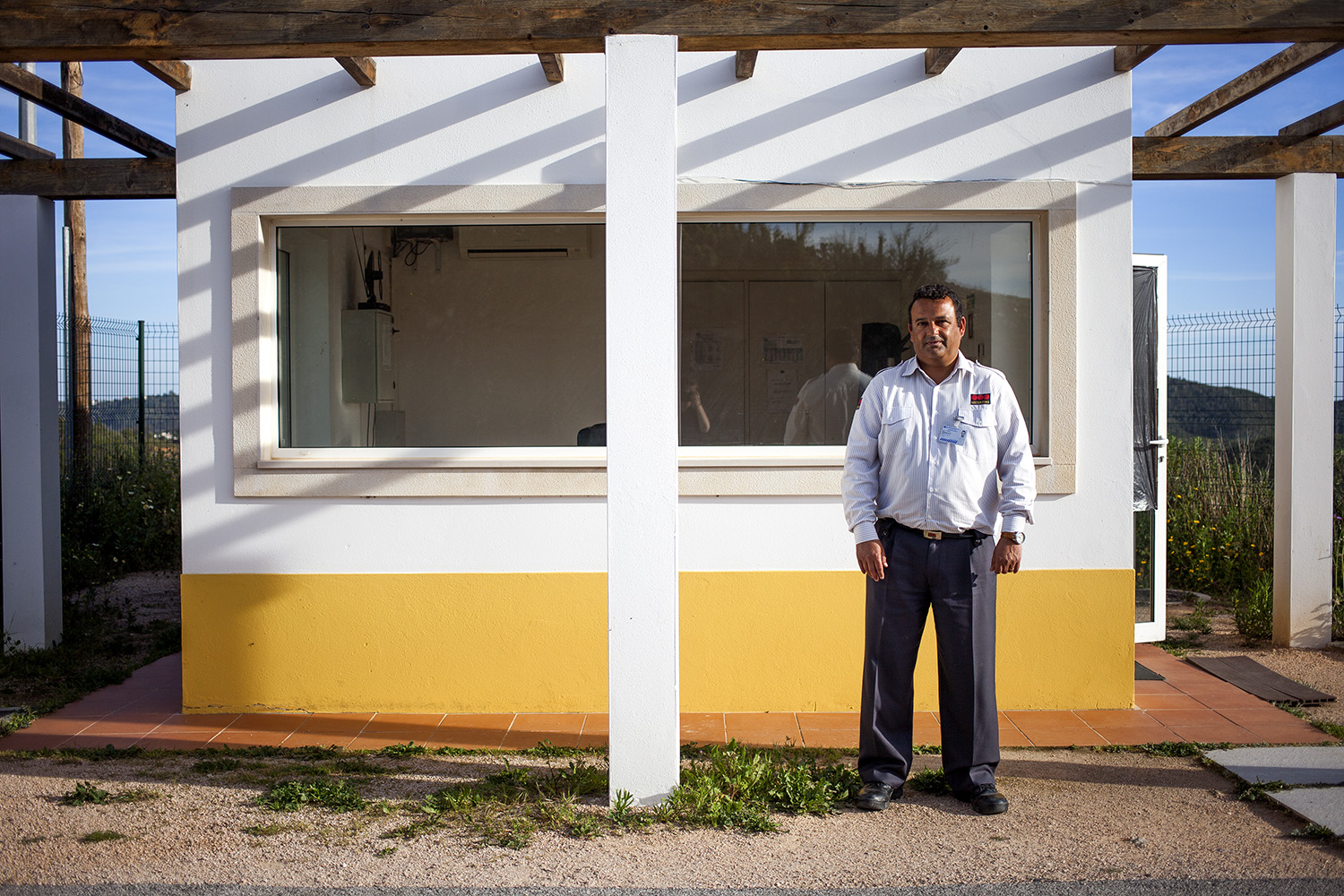Samuel Silva, 45, from São Paulo, Brazil, is one of the guards of CNRLI’s gates since 2013.
Samuel Silva is also part of the Iberian-lynx’s history. He is one of the guards of CNRLI’s gates. He left his life in São Paulo (Brazil) and his work at the Hospital in Portimão (Algarve) and now lives in Lagoa (Algarve) and he is one of those who guard the lynx.
He is interested in the work that is being done there. “I talk to Joana, member of the surveillance team. I like to know the news about the lynx. And she asks which animals I have seen.”
Samuel spends many hours guarding the gates of the centre, the entrance to which is closed to the general public. He admits it is a privileged place to watch nature. “I bought a bird identification guide and I have my binoculars here. Sometimes I bring my camera, others take photos with my cellular. I am not a very good photographer but I enjoy myself taking pictures of wildlife.”
The list of animals he has seen is impressive and would spark some envy in many nature lovers. “I have seen wild boar; deer appear in the morning and foxes in the evening. I have already seen them playing all night or hunting on the road.”
Samuel shows us the tracks made in the hill by the passage of wild animals, such as wild boar and deer.
He has also seen many birds, such as Bonelli’s eagle, partridges, hoopoes, larks, warblers and frogs, wild-rabbits and bees coming from many hives nearby.
One night a wildcat, a very rare species to see, passed by. “I got to thinking: is it a lynx that escaped? I was frightened…”
Samuel put a feeder with breadcrumbs and seeds and a drinking plate near the gate. He has already identified 22 species eating there. “It is a feast, especially in the morning. “There is an ocellated lizard that likes banana and comes here to eat. And a robin that dominates the feeder.” Goldfinches, wagtails, sparrows and several other species usually go there too.
“Being here and having time and patience, we can see a lot. It’s a privilege to have time. We have to observe, otherwise we do not see anything.”
[divider type=”thick”]The Birth of an Iberian-Lynx
A team from Wilder has been at CNRLI for two days on March 2015. In this series we show you how is it to work at this centre and all the people who take care of this endangered species.



